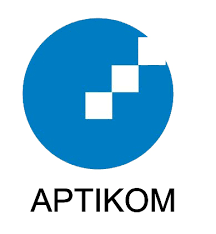Applying the Naive Bayes Algorithm to Predict the Student Final Grade
DOI:
https://doi.org/10.18196/eist.127Keywords:
Naive Bayes, E-Learning, Classification, Final GradeAbstract
The teaching and learning process of the Faculty of Engineering of Universitas Muhammadiyah Yogyakarta has used e-learning intensively. One of the benchmarks in determining students’ final grade is to take the values in e-learning. This study aims to predict students’ final grades by utilizing the data mining process and the Naive Bayes algorithm. This study provides students and lecturers information to enhance the teaching and learning process to improve students’ final grades and maintain satisfactory final grades until the lecture is complete. The research began with the literature study, data collection, data selection, data cleaning, data transformation and implementation with rapidminer and conclusion drawing. Based on the prediction of students’ final grades, one course obtained many unsatisfactory grades with an accuracy rate of 93.75%. Thus, the higher the accuracy value, the closer the predicted final value to the actual value.
References
Murtopo, Aang Alim. 2016. ‘Prediksi Kelulusan Tepat Waktu Mahasiswa STMIK YMI Tegal Menggunakan Algoritma Naive Bayes [Timely Graduation Prediction of STMIK YMI Tegal Students Using the Naive Bayes Algorithm]’. CSRID (Computer Science Research and Its Development Journal) 7 (3): 145. https://doi.org/10.22303/csrid.7.3.2015.145- 154. 2013
Mustafa, M. Syukri, Muh Rizky Ramadhan, and Angelina P. Thenata. ‘Implementasi Data Mining untuk Evaluasi Kinerja Akademik Mahasiswa Menggunakan Algoritma Naive Bayes Classifier [Implementation of Data Mining for Evaluating Student Academic Performance Using the Naive Bayes Classifier Algorithm]’. Creative Information Technology Journal 4 (2): 151. https://doi.org/10.24076/citec.2017v4i2.106. 2018
Putri, Astrid Novita. ‘Penerapan Naive Bayesian Untuk Perankingan Kegiatan Di Fakultas Tik Universitas Semarang [Implementation of Naive Bayesian for Ranking Activities at the Faculty of Tik Universitas Semarang]’. Simetris : Jurnal TeknikMesin, Elektro dan Ilmu Komputer 8 (2): 603. https://doi.org/10.24176/simet.v8i2.1545. 2017
Rahman, Fathur, and Muhammad Iqbal Firdaus. ‘Penerapan Data Mining Metode Naive Bayes Untuk Prediksi Hasil Belajar Siswa Sekolah Menengah Pertama (SMP) [Application of Data Mining the Naive Bayes Method to Predict Learning Outcomes of Junior High School Students (SMP)]’. Al Ulum Jurnal Sains dan Teknologi 1 (2). 2016
A. D. Rachmatsyah and B. Wijaya, “Data Mining Predicts The Graduation of Students of STMIK Atma Luhur Information System Using Neive Bayes Algorithm,” Jurnal Mantik, vol. 4, no. 3, pp. 2100–2105, 2020.
L. Marlina, M. Muslim, A. U. Siahaan, and P. Utama, “Data Mining Classification Comparison (Naïve Bayes and C4. 5 Algorithms),” Int. J. Eng. Trends Technol, vol. 38, no. 7, pp. 380–383, 2016.
Z. Zainal, “Case study as a research method,” Jurnal kemanusiaan, vol. 5, no. 1, 2007
K. Natarajan, J. Li, and A. Koronios, “Data mining techniques for data cleaning,” in Engineering Asset Lifecycle Management, Springer, 2010, pp. 796–804.
E. Rahm and H. H. Do, “Data cleaning: Problems and current approaches,” IEEE Data Eng. Bull., vol. 23, no. 4, pp. 3–13, 2000.
S. Zhang, C. Zhang, and Q. Yang, “Data preparation for data mining,” Applied artificial intelligence, vol. 17, no. 5–6, pp. 375–381, 2003.



